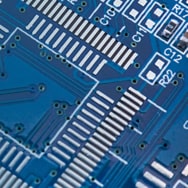GRAPHENE
Graphene, a Nobel Prize-winning nanomaterial, is both the strongest and the lightest material known. Graphene is a two-dimensional crystal only an atom thick.
PROPERTIES
 It is two hundred times stronger than steel and five times lighter than aluminum.
It is two hundred times stronger than steel and five times lighter than aluminum.
 Depending on the type of graphene material, it can be a conductor of electricity or insulator.
Depending on the type of graphene material, it can be a conductor of electricity or insulator.
 It is resistant to UV rays and corrosion.
It is resistant to UV rays and corrosion.
 It is highly waterproof, even to hydrogen and helium.
It is highly waterproof, even to hydrogen and helium.
 It is biocompatible.
It is biocompatible.
 It has antimicrobial properties.
It has antimicrobial properties.
 It can be functionalized to create various graphene-based materials for different applications.
It can be functionalized to create various graphene-based materials for different applications.
Graphenemex
More information








 Engage with Graphene
Engage with Graphene The Graphene Experts
The Graphene Experts Graphene Flagship
Graphene Flagship Graphene Update
Graphene Update